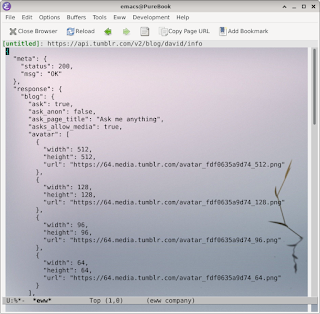Take Charge of PDF in GNU Emacs

Display popup annotation in docview All or None Docview is the default major-mode for displaying PDF in Emacs. It converts each page into an image using ghostscript into a temporary folder (/tmp/docview<nnnn>) and displays the same. For large PDF document, this conversion is unnecessary in most cases - especially when one is looking at the document for quick reference. An ideal solution would be to convert pages on demand. However, for this, one would need to know the number of pages in the document. This can be done either by some external tools like pdfinfo or one would need to parse the metadata in the document. So here's some elisp code for the same. (require 'pdf) (pdf-get "Root.Pages.Count") or M-x pdf-total-pages ;; Metadata about the document (pdf-get "Root.Metadata") So here we are - now that one can parse the metadata, what else can we do? Form fields and Embedded scripts M-x pdf-form PDF supports embedded Javascr...


